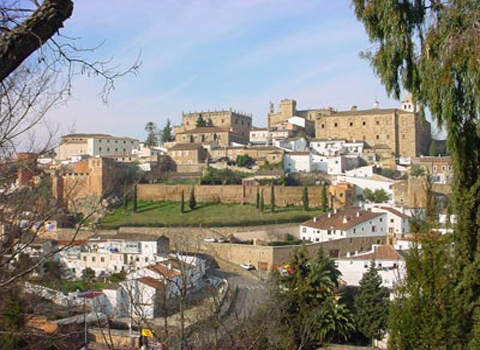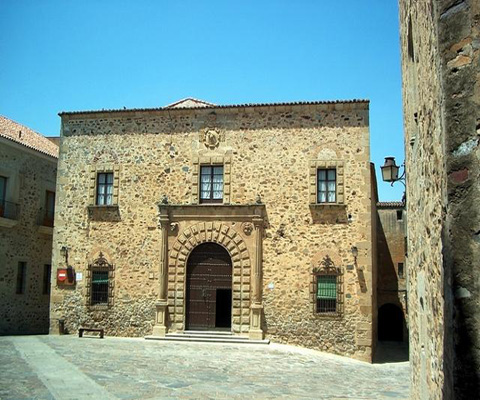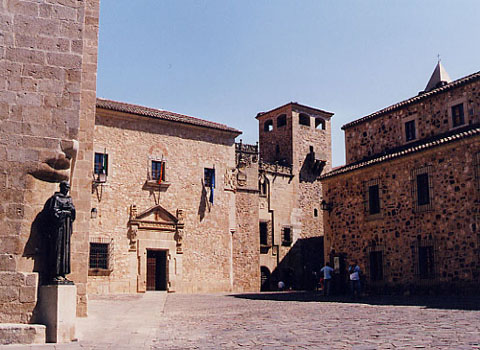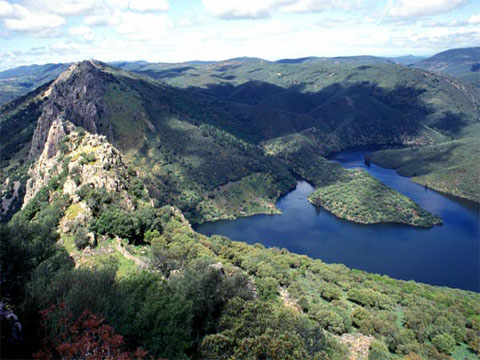
Located north of the community of Extremadura and bordering Portugal to the west, Cáceres is one of the Spanish cities that stands out for having one of the most complete Historical Complexes in the world. This fact led to it being declared a World Heritage Site and the Third Monumental Complex of Europe , in addition to being integrated into the tourist routes of the Jewish Quarters and the Ruta de la Plata .
Brief historical note
Its long history dates back to the Upper Palaeolithic , more than 20,000 years ago . This is attested by paintings found in the Maltravieso Cave , south of the town’s urban center. Also the caves of Conejar and the Caverns of Santa Ana, have revealed data about the Neolithic era.
Likewise, Celtiberians, Romans and Visigoths, left an imprint that today has been revealed through numerous finds. On the contrary, the remains of later cultures are very scarce, which suggests that the city was abandoned until the 12th century. As of this date, the Arabs rebuild all the fortifications and walls, based on those that already existed from Roman times.
Much of the stately architecture that is currently preserved was made after the reconquest, experiencing its maximum splendor from the 15th century . Let’s see a small approximation of the lavish architectural legacy:

Monastery of San Francisco . Built at the end of the 15th century, mixing Gothic and Renaissance styles.
Palace of the Golfines de Arriba. It belonged to the Golfines family and its construction began in the second half of the 15th century. It is a strong house with turrets on the corners.
Palace of the Veletas. Currently the headquarters of the provincial museum, this building stands on the remains of the old Muslim Alcazar (12th-13th centuries). Of the whole complex, the cistern that has been preserved to this day stands out.
Mayoralgo Palace. One of the most significant buildings in the old town of Cáceres as it fuses medieval and Renaissance elements. It dates from the year 1430 and the family crest is still preserved on its façade. 
Religious architecture:
– Church of San Juan (12th-15th centuries), Gothic.
– Church of Santa Maria (XV and XVI) In transitional Romanesque to Gothic style, with some Renaissance elements.
– Church of Santiago, of Romanesque construction, transformed in the s. XVI. It has a larger altarpiece of 1,557.
– Church of San Mateo (14th century) and the hermitage of the Virgen de la Montaña (17th century), with an altarpiece by J. Churriguera.
– Hermitage of the Mountain, in honor of its patron saint, the Virgin of the Mountain.
– Convent of San Pablo.
– Hermitage of Peace.
– San Francisco Javier Church.
Civil architecture:
– Palacio de Los Caballos, current Museum of Contemporary Art.
– Palace of Los Golfines de Abajo
– House of Los Perero.
– House of the Storks
– Godoy Palace
– The Espadero Pizarro, known as «Casa del Mono».
– Moctezuma Palace
– Episcopal palace
– Palace of the Comendador de Alcuescar, current Parador Nacional de Cáceres.
– Provincial Palace Diputación de Cáceres.
– Barrio de San Antonio, a popular neighborhood with details of Arab architecture (Casa Almohade).

Nature
– Monfragüe Natural Park , the greatest exponent of Mediterranean vegetation and fauna.
– Garaganta de los Infierno , declared a Natural Reserve for its great wildlife importance and exceptional flora.
– Llanos de Cáceres, with the population of protected birds of the Iberian Peninsula.
– Los Barruecos , declared a Natural Monument for its curious rocky outcrops.
